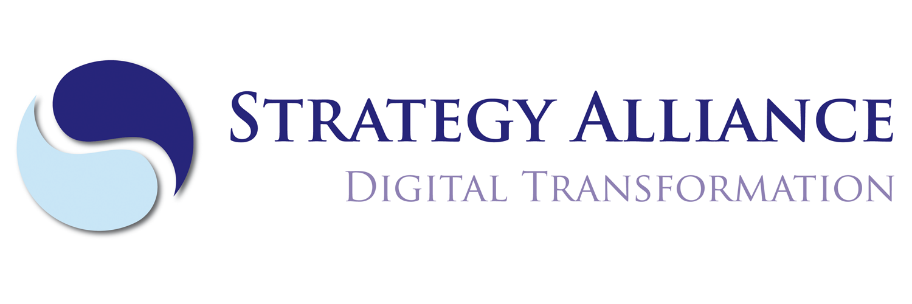One of the fun aspects of my job is the many conversations that I have with organizations about their digital transformation journey. A frequently heard perspective is that the world is becoming increasingly complex. Usually this is followed by a discussion about business architecture as a capability/approach to tackle the challenges that arise around dealing with this complexity. In this post, I will share my thoughts on complexity and will explain why we believe that the combination of business architecture and data management will help in the (complex) challenges around digital transformation.
Complexity
It seems that the word ‘complex’ is used in any situation where it takes more than 10 minutes of analysis to find a solution to some problem. This greatly devaluates the meaning of this term. After studying a ton of research on complexity/complex systems, I think it is safe to conclude that defining the term ‘complex’ is not as easy as it seems.
I have been a fan of the Cynefin* framework for years since it gives a clue as on how to deal with the distinction between ‘complex’ and ‘complicated’ problems. The amount of information in the public domain about this framework was limited until recent. The good news is that there is finally an elaborate publication that discusses Cynefin and its associated tools and techniques for sensemaking.
Reading Tip: Cynefin - Weaving Sense-Making into the Fabric of Our World
The essence of this framework is the distinction between ordered problems (either ‘simple’ or ‘complicated’), complex problems, and chaotic problems. The last one is out of scope for this post and will make an interesting topic for future discussions about leadership. Stay tuned for more!
Complicated can, by their very nature, be analyzed. It may take a while to figure out how to put together an unpickable lock or to figure out how to build a quantum computer, but eventually it can be done. These complicated problems may take a lot of figuring out, but eventually you will know it when you have a correct solution to the problem. Most engineering problems fall into this category and the proper way of responding to them is to sense what is going in, to analyze the problem in great depth and finally to implement your solution.
Complex problems are completely different. We speak of a complex problem when the number of interacting variables is so big that cause and effect can no longer objectively be determined a priori. Only in hindsight can this be analyzed with any confidence. The response mode is to form a hypothesis of what might work, try it, and then deal with the consequences of your intervention. The current Covid pandemic – especially when socio-economic variables are also considered – is a good example. All we can do is gather data to substantiate hypotheses as best as we can, and act accordingly.
Going back to digital transformation challenges, the prudent conclusion is that most organizations have left the relative safety of the complicated domain and have arrived in the complex domain which offers great opportunities, but also poses serious threats.
Business Architecture
Many definitions of the notion of architecture exist. We generally recommend following the ISO/IEEE definition which states that architecture is about (a) the fundamental properties of a system, and (b) the principles guiding design and evolution of that system. In other words, architects worry about the big-ticket decisions about the design and evolution of systems. The word ‘system’ should be interpreted in the broadest possible sense and includes all aspects of the enterprise: customers & other stakeholders, products & services, processes, people, data/information, systems, and their interplay. Unfortunately, this definition is typically associated with a more ‘traditional’ architecture approach which presume a mindset that fits well with Cynefin’s Complicated domain. Usually, the term ‘waterfall approach’ is used: architects attempt to get grip and control through an approach that is characterized by a big design up front and in an increasingly complex world, that is not a recipe for success. A more modern business architecture approach is more applicable.
The standard and industry reference for business architecture is the BIZBOK of the Business Architecture Guild. The BIZBOK is often associated with Cynefin’s complex domain. In the BIZBOK, business architecture is defined as follows:
Business architecture represents holistic, multidimensional business views of: capabilities, end-to-end value delivery, information, and organizational structure, and the relationships among these business views and strategies, products, policies, initiatives, and stakeholders.
The focus, at least, is on decision making. Rather than a big design up front, business architects work with different scenario’s and develop just enough architecture, just in time, to help decision makers navigate the complexity of their digital transformation problems. The modeling approach advocated by the BIZBOK is based on value streams and capabilities so they fit well with a business perspective. Recognizing the processers/value streams are the value creation engine of the organization suggests that capabilities are the key components of this engine and data is the fuel hat powers the engine. This, in turn, emphasizes the need for good data management.
Data management
Data management is a hot topic. Our recent book – Data management: a gentle introduction – is based on the Data Management Body of Knowledge (DMBOK), which is the industry reference for data management. In the previous section, I emphasized that data is the fuel that powers processes – the value creation engine. This illustrates that there are two sides to data management:
- Value creation with data: this part of data management refers to the fact that data is used to create value, either in primary business processes or through data driven decision making.
- Grip on data: refers to the fact that the availability, security, and quality of data must be managed if we want it to be of any use in value creation.
Balancing these two perspectives is not an easy task and requires careful planning, and fitting data into the bigger picture. This is exactly what business architecture is all about.
Our tips for business architecture and data management
In our view, complexity in business is a given. We don’t expect this to go away any time soon so it is best to prepare for it as best as you can. Based on our experience with business architecture and data management initiatives with our customers, our recommendations are:
- Start with the big picture: find a way to get a clear sense of direction of what you want to achieve with the organization. Keep it simple: a high-level sense of direction should be enough to get you going.
- Develop and maintain a simple ‘common operational picture’ in the form of value stream diagrams and a capability map to understand where you are and how the pieces of the operational puzzle fit together.
- Involve your staf in determining the how. You would be surprised at the creative solutions your staff will come up to achieve your goals.
- Make sure that every improvement initiative takes into account that data links value creating in processes to enabling systems.
If you are interested in these topics and would like to know more about our approach, send us an email at info@strategy-alliance.com.

